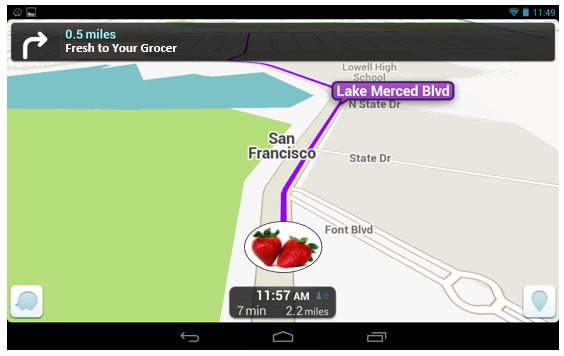Managing fresh food supply chain routing involves managing many changes and variables. It’s kind of like driving in commute traffic.
Supply Chain Routing: It’s like Waze!
Waze is my go-to navigation app. Most days I think I would be lost without it. But some days I think it’s getting me lost. In fact, in the last six months alone, Waze has charted about 20 different routes for my evening commute. Sometimes I take the freeway. Other times I go through residential neighborhoods that I didn’t even know existed. Sometimes I go north to get south.
Why so many different routes? Because traffic is dynamic, fluid and based on countless variables. There could be an accident, an “object on the road ahead,” police on the highway or a sporting event that just ended. Waze considers all factors to create a route that can dynamically change even while I’m on the road. It accounts for the variables.
It’s rather similar to the fresh food supply chain. Why? Because there are so many variables that impact freshness and food safety from the time a product is harvested to when it reaches the grocery store. Strawberries or lettuce, for example, could sit in the field after harvest for five minutes or five hours. The temperature at harvest could be 50 degrees or 100 degrees. The precooler could be immediately available or have a two hour wait. At every point in the journey, things can go smoothly or drastically wrong – all of which impacts the remaining freshness and shelf-life that’s delivered to the grocer.
When left unmanaged, the result is a third of produce delivered to the retailer will spoil at the store or before the customer can consume it. And you can’t tell which third because it all looks fresh when it’s received.
You Can’t Eliminate Variables
You can’t eliminate the variables in the supply chain. The trick, as Waze has figured out, is to have the data to manage the variability and adjust accordingly. This can be done by collecting data about the product from the time it is harvested or processed to the time it arrives at its destination. By applying machine learning and predictive analytics to that data, we can dynamically calculate the remaining shelf-life or freshness of the product (which we call the Zest Intelligent Pallet Routing Code or ZIPR Code that indicates days of remaining shelf-life) every step of the way. We can even adjust for variability, potentially rerouting product with shorter shelf-life to a closer destination, for example, to ensure it has enough freshness to meet the retailer’s requirements.
We can also generate real-time alerts about issues as they occur (rather than after they occur when it’s too late to do anything about it) so supply chain workers can take corrective action before product is impacted. For example, if there are two pallets of strawberries waiting for precool and one is at 50 degrees and the other at 80 degrees, the worker can prioritize the hot pallet for precool, helping to retain its shelf-life. It’s like being told there’s an accident ahead so you can get off at the next exit and avoid getting stuck in traffic.
Having the data and insight to know what to do with it can mean getting home on time or having strawberries that stay fresh in your refrigerator for five days or more.
Safe and speedy travels!
You can learn more about the ZIPR Code here.


